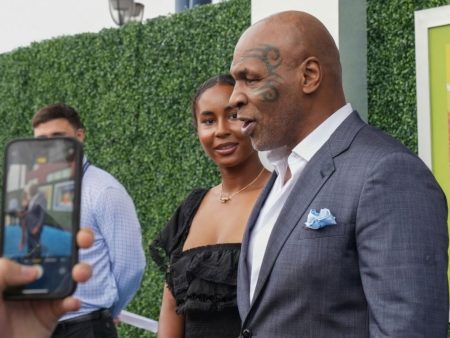Las Vegas Replicas: Which Iconic Landmarks Fool the Most Americans?
Las Vegas is famous for reimagining the world’s most celebrated landmarks, letting visitors experience the likes of the Eiffel Tower, the Empire State Building, Venetian canals, and historic monuments—all within a single city. While most people assume these replicas are obvious fakes, some of them are so convincing that even Americans familiar with the originals get fooled.
To discover just how deceiving these Vegas versions are, a national quiz surveyed 5,000 U.S. adults, presenting photos of the real and replica landmarks and asking them to guess which was authentic. The results reveal which copies most often trick Americans—and which states are best and worst at spotting the differences.
Quick Survey Highlights
– Nearly all participants (95.5%) mistook Las Vegas’ Statue of Liberty for the real one.
– New Jersey residents led the nation in differentiating authentic monuments from Vegas replicas, with a success rate of 62.5%.
– Wyoming was least successful, with only 30% accuracy.
– The Empire State Building was the easiest to identify, with a 94% correct response rate.
– Many were convinced by alternate international replicas, such as versions in China and Seoul.

Statue of Liberty: The Master of Disguise
While the Statue of Liberty is one of the most recognizable U.S. monuments, it proved to be the most difficult for quiz-takers. An astonishing 95.5% of Americans believed a photo of the Las Vegas replica depicted the actual New York icon, leaving just 4% able to correctly tell them apart. Even the U.S. Postal Service was fooled—using the Vegas version on official stamps in 2010, leading to a $3.5 million error. The New York-New York Hotel may have the most impressive “dupe” in the city.
Arc de Triomphe: Many Imitations, Little Recognition
The Parisian-inspired Paris Las Vegas Hotel hosts its own Arc de Triomphe, joining a global roster of similar replicas. Yet, only 39% of American participants identified a legitimate photo of the real Arc de Triomphe. More puzzling, 38% believed the Chinese imitation in Tianducheng was the authentic version, and 15.8% opted for Barcelona’s Arc de Triomf. In this case, just 8% incorrectly believed the Las Vegas version was the real one.
Trevi Fountain: Which Fountain is the Real One?
Thanks to pop culture and travel inspiration, many Americans think they know Rome’s Trevi Fountain. When given images of the original, the Vegas replica, and Seoul’s copy in Lotte World, quiz-takers were split three ways:
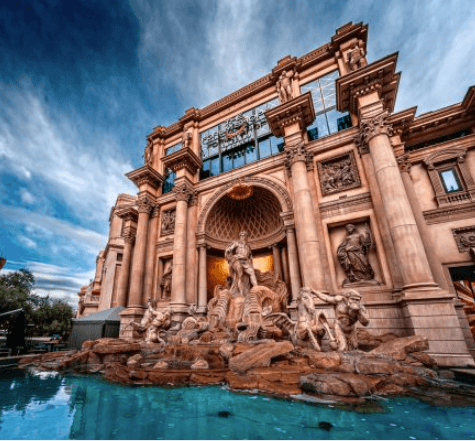
– 40% selected the Vegas version as authentic.
– 37% chose the Seoul replica.
– Only 24% picked the actual fountain in Rome.
St. Mark Campanile Bell Tower: Italian Heritage, Global Confusion
St. Mark’s Campanile in Venice is a famous architectural landmark, but it challenged participants’ recognition skills. Presented with photos of the original, the Las Vegas version, and Canada’s Ontario copy, most respondents believed the Vegas structure was real (58%). The Canadian replica tricked 27%, and only 15% successfully identified the real bell tower in Venice.
Erawan Shrine: Vegas’ Thai Temple Surprises Americans
The Erawan Shrine, originally in Bangkok, has an elaborate counterpart in Las Vegas. When shown both versions, just 45% correctly picked the authentic Thai monument, while 55% thought the Las Vegas replica was the original. The visual complexity and surrounding billboards possibly added to the confusion.
Eiffel Tower: Spot the Parisian Impostor
With over 80 replicas worldwide, the Eiffel Tower’s design is well known but often imitated. The Las Vegas version is an attention-grabber, though built at half the height of the original. When asked to distinguish between the real Paris landmark and its copies, results revealed ongoing confusion:
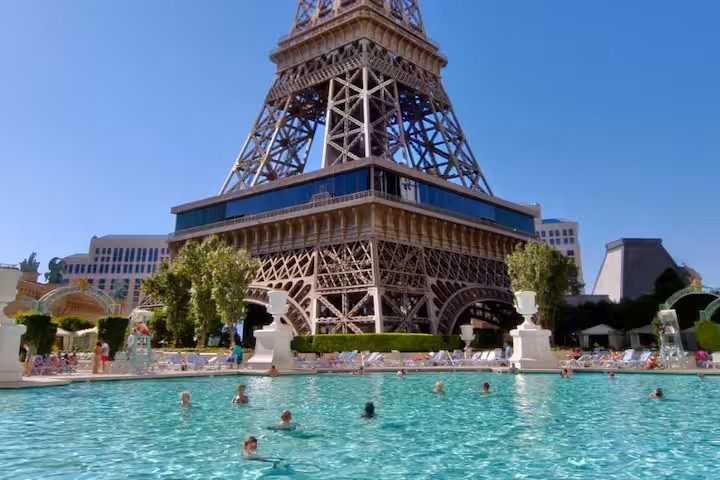
– 54% of Americans identified the Vegas version (with a hotel pool in view) as genuine.
– 40% correctly recognized the replica.
– 4% mistook the Eiffel Tower in Paris, Texas as the original.
The Great Sphynx: Ancient Icon or Vegas Duplicate?
Despite being just a few decades old and much less weathered than the original, the Luxor Hotel’s Sphynx still manages to confuse:
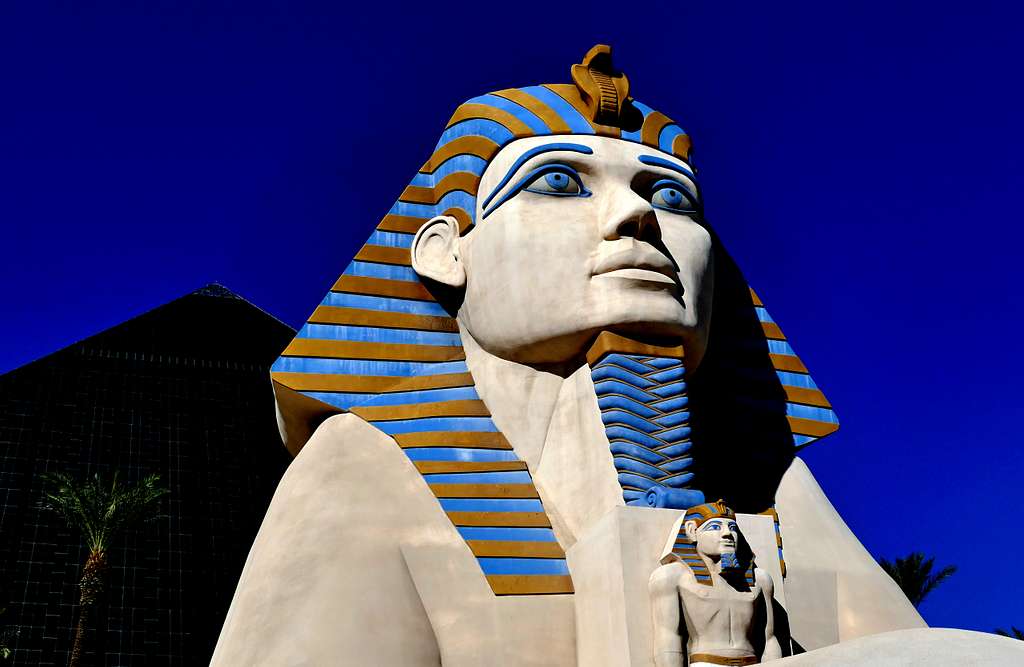
– 51% mistook the Las Vegas statue for Egypt’s original Sphynx.
– 46% realized it was a replica.
– Only half of the respondents could identify the Giza original, perhaps due to the visible wear and missing facial features on the ancient monument.
Statue of David: Renaissance Expertise Prevails
Michelangelo’s renowned Statue of David is almost as famous for its imitations as for its artistry. This time, Americans proved more discerning:
– 82% distinguished the original from the fakes.
– 58% thought another Italian replica in Florence was the real one when compared with the Vegas version.
– 93.6% identified the Vegas attempt as an imitation, helped perhaps by the base engraved with “CAESAR’S.”
Venice’s Grand Canal: The Real Gondola Ride
Replicating Venice’s canals indoors in Las Vegas delivers an engaging experience, but not a perfect match. The ceiling-painted blue sky gives the game away for many quiz-takers.
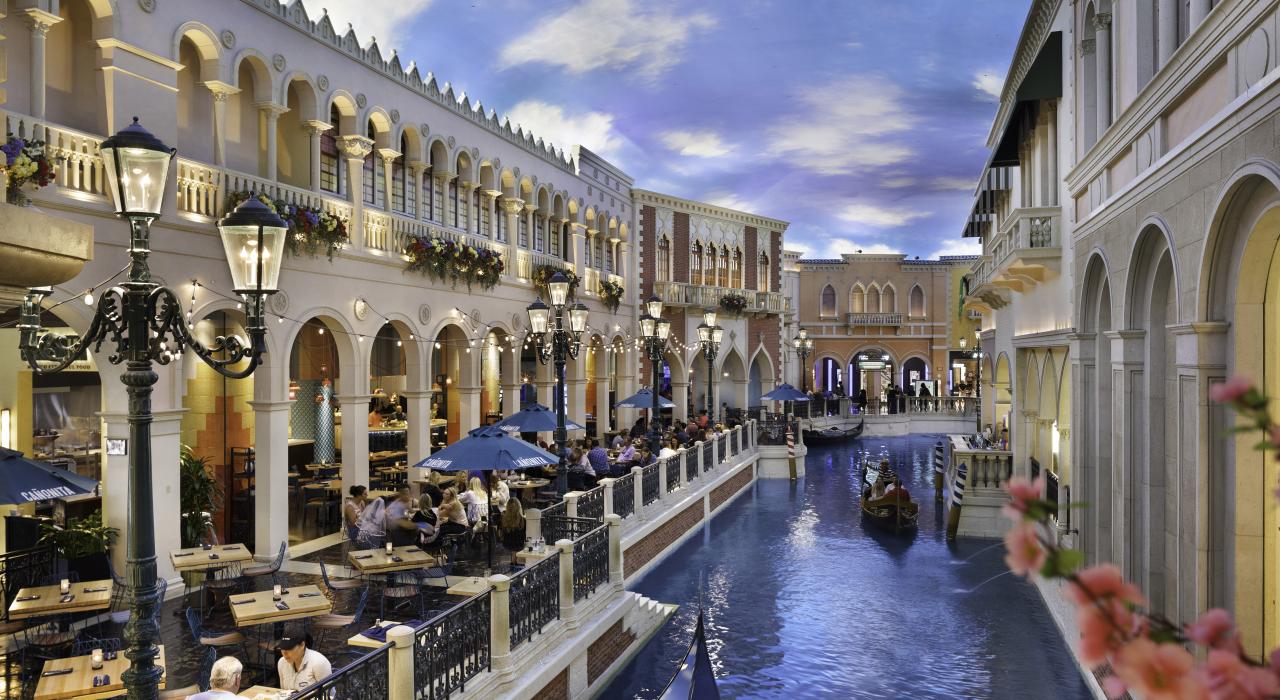
– 89% recognized authentic photos of Venice’s Grand Canal.
– 7% confused it with Las Vegas’ enclosed waterway.
Empire State Building: New York’s Iconic Silhouette Triumphs
The distinctive design and global fame of the Empire State Building made it the easiest to recognize. When asked to differentiate between the original, the Vegas replica, and other imitation skylines:
– 94% correctly identified the real New York tower.
– 3% selected the Las Vegas recreation.
– 3% thought the Danish Miniland model was the genuine article.
Top States for Spotting the Differences
Residents in certain states proved more adept at identifying originals versus Vegas versions. Here’s a breakdown of the highest-performing states in the quiz:
| Rank | State | Success Rate (%) |
|---|---|---|
| 1 | New Jersey | 62.5 |
| 2 | Connecticut | 60.0 |
| 3 | Oregon | 59.0 |
| 4 | Michigan | 58.18 |
| 5 | Pennsylvania | 56.67 |
| 6 | Florida | 56.62 |
| 7 | California | 56.36 |
| 8 | Illinois | 56.36 |
| 9 | North Carolina | 55.45 |
| 10 | New York | 55.0 |
Interestingly, New York, despite having two landmarks among the line-up, ranked tenth.
States That Struggled the Most
Certain regions found distinguishing real monuments from Vegas copies especially challenging. The states with the lowest recognition rates were:
| Rank | State | Success Rate (%) |
|---|---|---|
| 1 | Wyoming | 30.0 |
| 2 | Vermont | 40.0 |
| 3 | Delaware | 45.0 |
| 4 | Colorado | 46.67 |
| 5 | West Virginia | 50.0 |
Notably, none of these states host monuments featured in Las Vegas, which may have added difficulty for local residents.
Overall Rankings: Which Landmarks Deceived Most?
According to the survey, Americans excelled at recognizing the Empire State Building, Venice’s Grand Canal, and the Statue of David. The replicas that tricked the most people were the Statue of Liberty, Arc de Triomphe, Trevi Fountain, and St. Mark Campanile.
– Best identified: Empire State Building, Venice Grand Canal, Statue of David
– Most misleading: Statue of Liberty, Arc de Triomphe, Trevi Fountain, St. Mark Campanile
In general, even the nation’s top-performing state could only distinguish real from fake 62.5% of the time, while the average hovered around 50% accuracy.
How the Survey Was Conducted
In July 2024, 5,000 U.S. residents aged 18 to 65 participated in a photo quiz regarding landmark recognition. The survey included images of originals and replicas of world-famous monuments in Las Vegas, such as the Statue of Liberty, Empire State Building, Eiffel Tower, Erawan Shrine, Sphynx of Giza, St. Mark Campanile, Trevi Fountain, Statue of David, Venice Grand Canal, and Arc de Triomphe. Of the participants, 61% were male, 38% female, and less than 1% identified as non-binary or other.
Usage and Attribution
All data and visual assets in this article are available for non-commercial use. Please provide clear attribution linking to this page for proper credit.
For media inquiries, further details, or questions regarding this study, please contact the project authors directly.



